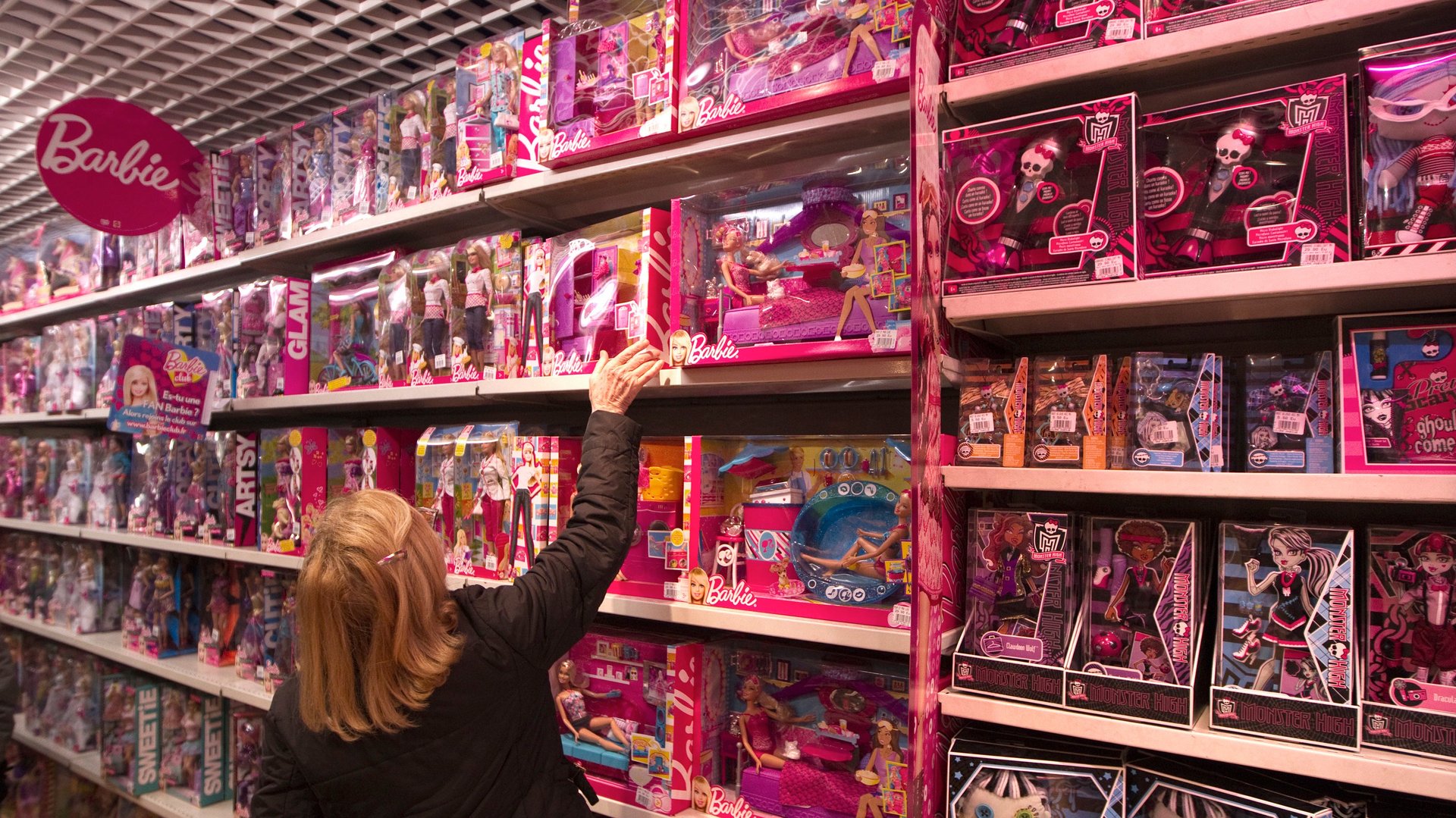Science shows gender neutral toys empower children, and possibly society at large
The days of pink and blue toy aisles may soon be a thing of the past, as toy manufacturers and big-box retailers move to eliminate gendered toy marketing.


The days of pink and blue toy aisles may soon be a thing of the past, as toy manufacturers and big-box retailers move to eliminate gendered toy marketing.
While gender equality advocates hail these advances (myself included) as positive, others are less than enthusiastic—and downright misinformed.
Most recently, news that Target is ditching gender-based toy labels—including in-store signage and colored backdrops on shelves—has sparked the ire of some conservatives, who contend that gender-neutral shopping experiences are an affront to “traditional” values.
Case in point: Franklin Graham (son of well-known evangelist Billy Graham) authored a viral Facebook post in Aug. 2015 denouncing Target, because God would have wanted gender binaries to stay intact: “I have news for them and for everyone else—God created two different genders,” Graham writes. “If you agree, share in the comments below—and let Target know … that you are perfectly willing to shop where the genders God created are appreciated.” And share people did. The post, touting an #OffTarget hashtag, has been shared nearly 50,000 and racked up more than 109,000 likes.
But despite Graham’s and his sympathizers’ beliefs, integrated toy aisles won’t result in widespread upheaval and gender confusion among children. As developmental psychologist Christia Brown recently told New York Magazine, such a claim simply “doesn’t hold up to the science … We know kids know their gender really early—they know it by about two years old.”
Science: 1. Haters: 0.
Science has also taught us about the detrimental effects that gendered toys can have on young, impressionable children. As Dr. Elizabeth Sweet, a sociologist and lecturer at the University of California, Davis, whose research focuses on gender and toys, explained to Quartz, “Studies have found that gendered toys do shape children’s play preferences and styles. Because gendered toys limit the range of skills and attributes that both boys and girls can explore through play, they may prevent children from developing their full range of interests, preferences, and talents.”
These effects shouldn’t be under-emphasized. According to Let Toys Be Toys, a UK-based campaign focused on eliminating the gendered labeling and marketing of toys, “the stereotypes we see in toy marketing connect with the inequalities we see in adult life. By late primary age, research … shows that children already have very clear ideas about the jobs that are suitable for boys and girls; ideas that are very hard to shake later on.”
In other words, a stroll down the toy aisle can end up teaching young girls that glamour and beauty, cooking and baby care are their ultimate goals, while boys might leave the toy store believing they should be rough, rowdy, and only interested in action-oriented activities. The result? Reinforced gender stereotypes that buttress outdated notions of masculinity and femininity, which, for mainstream outliers, can carry harmful consequences.
Conversely, de-gendering toys will allow children, and arguably society at large, to reap long-term benefits: when we offer kids equal choices from an early age, it logically follows that they will continue to expect and demand equality in their personal, social and professional lives.
This is precisely why my husband and I make a point to offer our three-year-old daughter a wide variety of toys. That’s not to say we preclude her from playing with traditionally “girly” toys (we even indulge her princess obsession, to my horror), but we want her to explore any and all interests, including ones that Franklin Graham would characterize as masculine.
Drop by our house at any given time and you’re likely to find her playing with trucks while dressed as Queen Elsa. And when our son is old enough to engage in parallel, associative and cooperative play, I will similarly support him no matter what toys catch his fancy. After all, play should encourage, not thwart, development. Nor should it ever be used to shame a child who wants to pursue non-binary interests.
Those concerned that removing gender labels from toys will “cause the collapse of the gender order,” as Sweet put it, are whipping themselves into a frenzy for nothing. De-gendering toys simply allows children to “be free to explore their diverse interests beyond the narrow confines of gender stereotypes. Taking down a sign that says ‘Girls’ Building Sets’ doesn’t prevent a girl from selecting that toy, it simply means that a boy could also choose it.
Besides, we still have a long way to go. In fact, according to Sweet’s research, toys are more gendered now than they’ve ever been before. “The use of signage and color-coding to gender segregate toy aisles is a relatively new phenomenon that has only become popular in the past several decades,” she said. And the social media backlash that followed Target’s announcement demonstrates just how deeply entrenched sexism is.
Still, there’s reason to remain optimistic. Elsewhere, campaigns like Britain’s “Let Toys Be Toys” have been very successful; to date, 14 retailers have committed to end gendered toy marketing. And if major US retailers like Target are willing to embrace a cultural shift, it’s likely that eventually more stores and manufacturers will follow suit.
As a mom and die-hard believer in gender equality, I’m hopeful. I never want my children to feel pressured, whether subliminally or overtly, to pursue interests based on their perceived gender identity, and I know I’m not alone. While having completely genderless toys is likely impossible, there is a middle ground, which stores like Target are increasingly embracing. Children should not be forced to comply with their parents’ socially-constructed ideas of binary gender roles. To each his or her own!